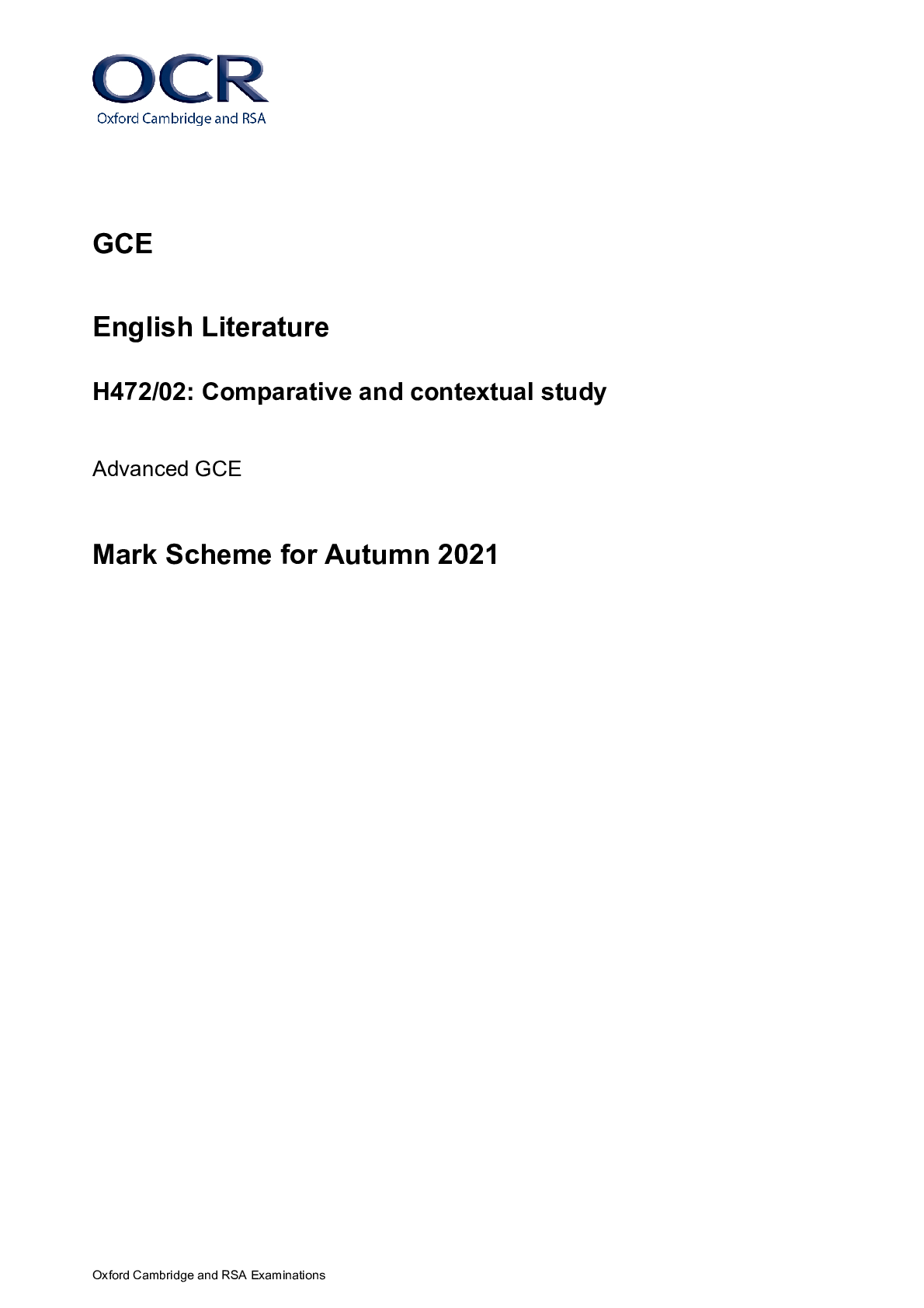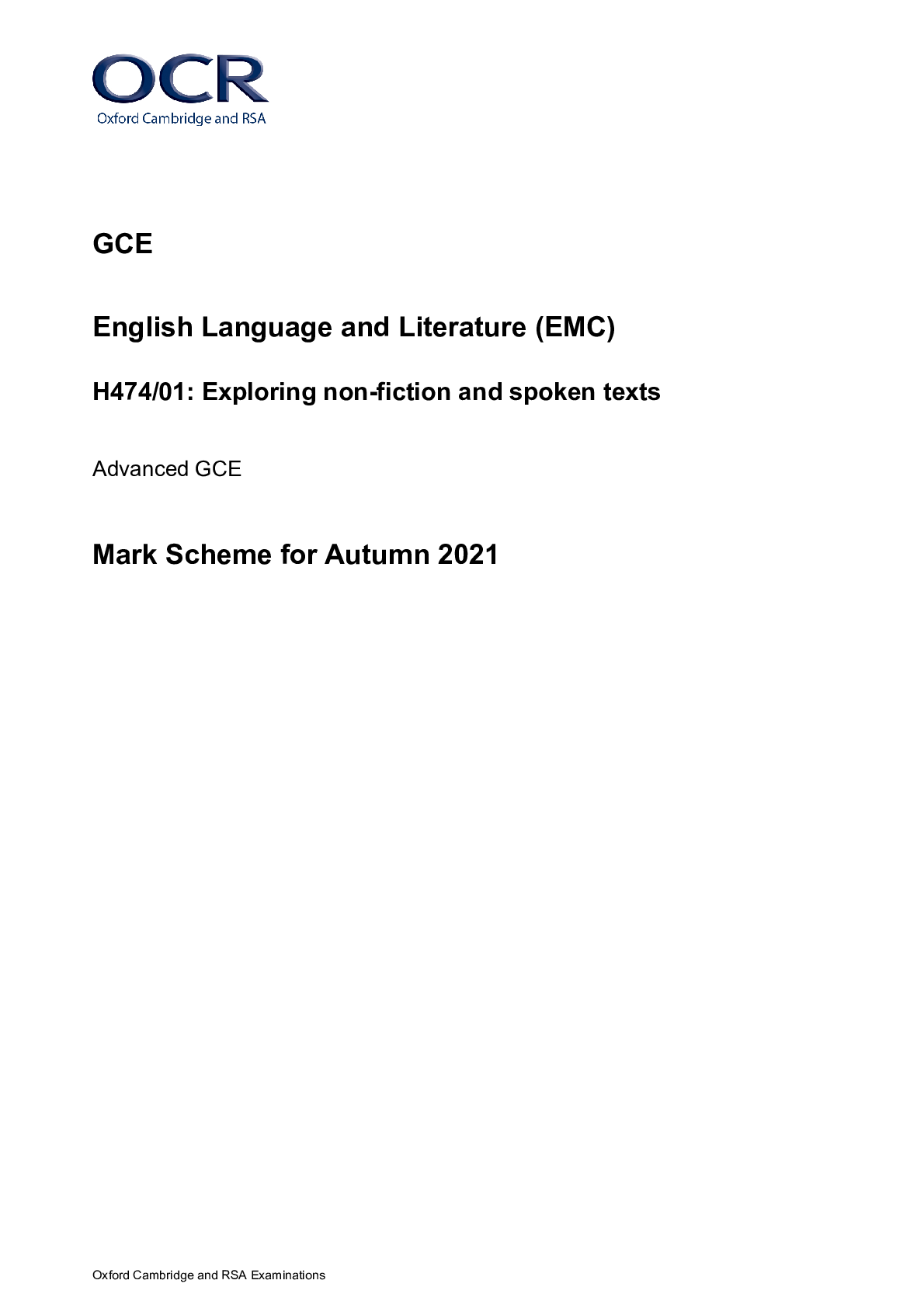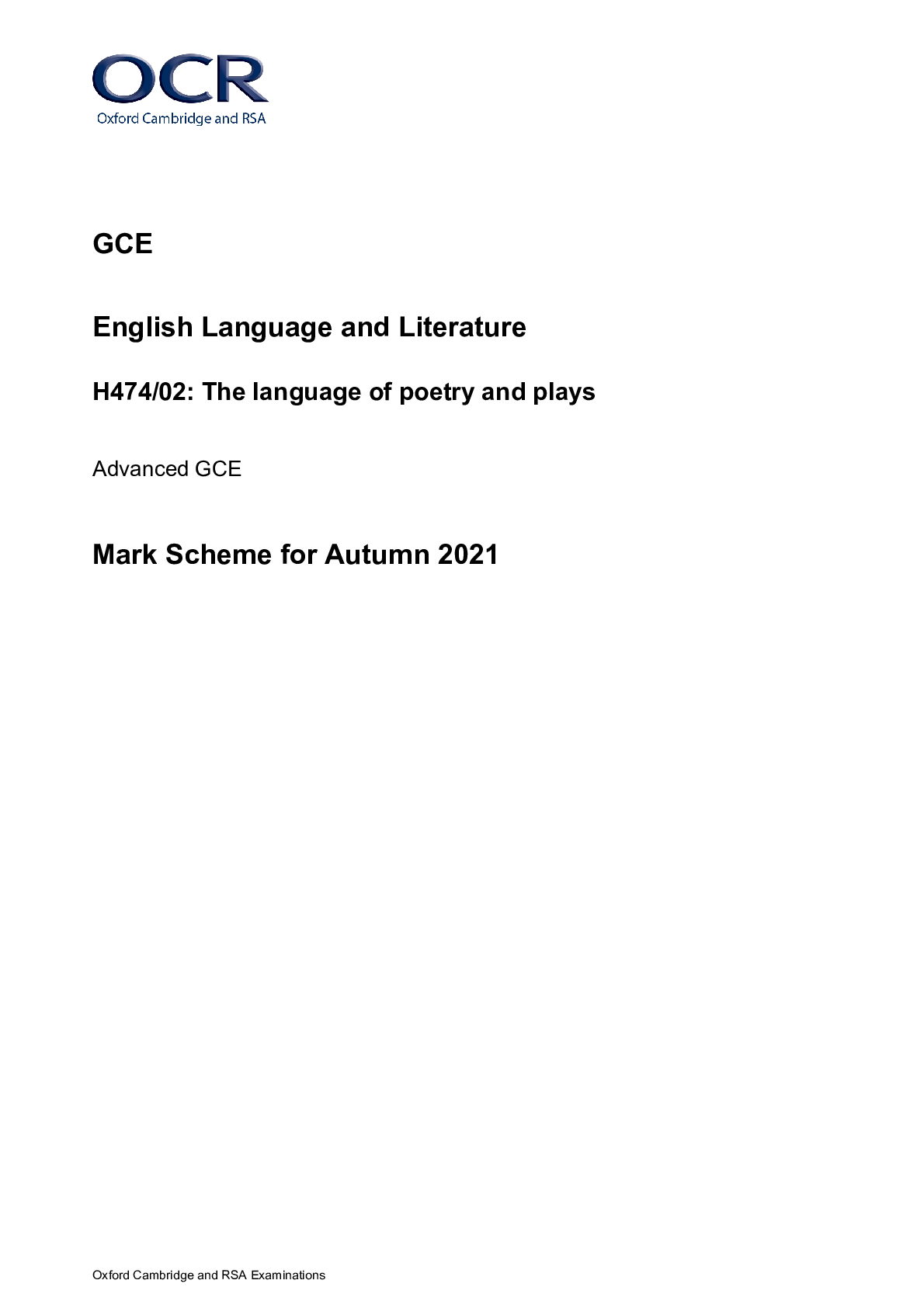Mathematics > MARK SCHEMES > PEARSON EDEXCEL MARKING SCHEME RESULT, NOVEMBER 2021, MATHEMATICS. ACCURACY GUARANTEED. RATED A+ (All)
PEARSON EDEXCEL MARKING SCHEME RESULT, NOVEMBER 2021, MATHEMATICS. ACCURACY GUARANTEED. RATED A+
Document Content and Description Below
General marking guidance These notes offer general guidance, but the specific notes for examiners appertaining to individual questions take precedence. 1 All candidates must receive the same treatme... nt. Examiners must mark the last candidate in exactly the same way as they mark the first. Where some judgement is required, mark schemes will provide the principles by which marks will be awarded; exemplification/indicative content will not be exhaustive. When examiners are in doubt regarding the application of the mark scheme to a candidate’s response, the response should be sent to review. 2 All the marks on the mark scheme are designed to be awarded; mark schemes should be applied positively. Examiners should also be prepared to award zero marks if the candidate’s response is not worthy of credit according to the mark scheme. If there is a wrong answer (or no answer) indicated on the answer line always check the working in the body of the script (and on any diagrams), and award any marks appropriate from the mark scheme. Questions where working is not required: In general, the correct answer should be given full marks. Questions that specifically require working: In general, candidates who do not show working on this type of question will get no marks – full details will be given in the mark scheme for each individual question. 3 Crossed out work This should be marked unless the candidate has replaced it with an alternative response. 4 Choice of method If there is a choice of methods shown, mark the method that leads to the answer given on the answer line. If no answer appears on the answer line, mark both methods then award the lower number of marks. 5 Incorrect method If it is clear from the working that the “correct” answer has been obtained from incorrect working, award 0 marks. Send the response to review for your Team Leader to check. 6 Follow through marks Follow through marks which involve a single stage calculation can be awarded without working as you can check the answer, but if ambiguous do not award. Follow through marks which involve more than one stage of calculation can only be awarded on sight of the relevant working, even if it appears obvious that there is only one way you could get the answer given.7 Ignoring subsequent work It is appropriate to ignore subsequent work when the additional work does not change the answer in a way that is inappropriate for the question or its context. (eg an incorrectly cancelled fraction when the unsimplified fraction would gain full marks). It is not appropriate to ignore subsequent work when the additional work essentially makes the answer incorrect (eg. incorrect algebraic simplification). 8 Probability Probability answers must be given as a fraction, percentage or decimal. If a candidate gives a decimal equivalent to a probability, this should be written to at least 2 decimal places (unless tenths). Incorrect notation should lose the accuracy marks, but be awarded any implied method marks. If a probability fraction is given then cancelled incorrectly, ignore the incorrectly cancelled answer. 9 Linear equations Unless indicated otherwise in the mark scheme, full marks can be gained if the solution alone is given on the answer line, or otherwise unambiguously identified in working (without contradiction elsewhere). Where the correct solution only is shown substituted, but not identified as the solution, the accuracy mark is lost but any method marks can be awarded (embedded answers). 10 Range of answers Unless otherwise stated, when an answer is given as a range (eg 3.5 – 4.2) then this is inclusive of the end points (eg 3.5, 4.2) and all numbers within the range 11 Number in brackets after a calculation Where there is a number in brackets after a calculation eg 2 × 6 (=12) then the mark can be awarded either for the correct method, implied by the calculation or for the correct answer to the calculation. 12 Use of inverted commas Some numbers in the mark scheme will appear inside inverted commas eg “12” × 50 ; the number in inverted commas cannot be any number – it must come from a correct method or process but the candidate may make an arithmetic error in their working. 13 Word in square brackets Where a word is used in square brackets eg [area] × 1.5 : the value used for [area] does not have to come from a correct method or process but is the value that the candidate believes is the area. If there are any constraints on the value that can be used, details will be given in the mark scheme. 14 Misread If a candidate misreads a number from the question. eg uses 252 instead of 255; method or process marks may be awarded provided the question has not been simplified. Examiners should send any instance of a suspected misread to review.Guidance on the use of abbreviations within this mark scheme M method mark awarded for a correct method or partial method P process mark awarded for a correct process as part of a problem solving question A accuracy mark (awarded after a correct method or process; if no method or process is seen then full marks for the question are implied but see individual mark schemes for more details) C communication mark awarded for a fully correct statement(s) with no contradiction or ambiguity B unconditional accuracy mark (no method needed) oe or equivalent cao correct answer only ft follow through (when appropriate as per mark scheme) sc special case dep dependent (on a previous mark) indep independent awrt answer which rounds to isw ignore subsequent workingPaper: 1MA1/1H Question Answer Mark Mark scheme Additional guidance 1 (a) 15.414 M1 for a complete method with relative place value correct including intention to add all the appropriate elements of the calculation eg 2 lines of the 1st method, internal numbers of grids, or complete structure shown of partitioning methods. 14680 734 15414 3 6 7 1 2 2 2 4 8 0 1 1 6 2 4 4 1 4 300 60 7 40 12000 2400 280 2 600 120 14 12000 + 2400 + 280 + 600 + 120 + 14 = 15414 A1 for digits 15414 A1 (ft) dep on M1 for correct placement of the decimal point into their final answer (b) 37.4 M1 for a start to a method, eg 598.4 ÷ 16 (or 59.84 ÷ 1.6) = 3 (as a first digit) A start to a repeated subtraction method or build-up method is acceptable if a correct first digit of 3 is found A1 for digits 374 A1 (ft) dep on M1 for correct placement of the decimal point into their final answer 1 5 4 2Paper: 1MA1/1H Question Answer Mark Mark scheme Additional guidance 2 Venn Diagram C1 for one correct region Ignore all entries except the region you are marking for each mark C1 for two correct regions C1 for all regions correct 3 8 1 15 M2 for a complete method, eg 4 – 2 + 3 15 − 10 15 condoning error with one numerator or for 21 8 5 3 = 63 40 15 15 (= 23 15 ) with no more than one error (M1 for finding two fractions with a correct common denominator, with at least one correct corresponding numerator, eg 3 15 , 10 15 or for converting both to improper fractions, eg 21 5 , 83 ) At least one improper fraction must be correct A1 8 1 15 oe Any equivalents must be a mixed number (0) 4 8 10 16 12 2 14 6 18Paper: 1MA1/1H Question Answer Mark Mark scheme Additional guidance 4 Rahim and correct figures P1 for start to the process to find 20% for Tamara, eg 220000 × 0.2 oe (= 44000) or 30% for Rahim, eg 160000 × 0.3 oe (= 48000) OR for 1 – 0.2 (= 0.8) or 100 – 20 (= 80) or 1 + 0.3 (= 1.3) or 100 + 30 (= 130) Build up processes are acceptable but must be complete and correct P1 for a complete process to find at least one new value, eg 220000 – “44000” (= 176 000) or 160000 + “48000” (=208 000) OR 220000 × “0.8” (=176 000) or 160000 × “1.3” (= 208 000) A1 for one correct value, 176 000 or 208 000 C1 for correct conclusion supported by correct figures eg Rahim, 176 000 and 208 000 Award 0 marks for a correct answer with no supportive working 5 33 P1 for relating 24 to 8 parts or (1 part =) 24 ÷ 8 (= 3) or for 15 – 7 (= 8) or starts to use a build-up method, eg (8 :) 14 : 30 8 parts = 24 P1 for 15 – 4 (= 11) and 24 ÷ 8 (= 3) or 15 × 3 (= 45) and 4 × 3 (= 12) or for 12 (: 21) : 45 A1 caoPaper: 1MA1/1H Question Answer Mark Mark scheme Additional guidance 6 12 P1 for a process to find the area of cross section, eg 750 ÷ 25 (= 30) oe or 1 2 × 5 ൈ h oe May use any letter for h or may use ? P1 for a correct equation in h, eg 750 ÷ 25 = 1 2 × 5 ൈ h oe or 1 2 × 5 × h × 25 = 750 oe or for a complete process to find h, eg 750 2 25 5 oe or “30” × 2 ÷ 5 A1 cao SC B1 for answer of 6 if P0 scored 7 Shown M1 for a correct expression for the area of one face of the cube, eg x2 or a correct expression for the surface area of the cube, eg 6 × x2 No marks for x 6 without any working. M1 for a correct expression for the surface area of the sphere, eg 4 × π × 32 (= 36π) M1 for forming a suitable equation, eg 6 × x2 = 4 × π × 32 or 6x2 = “36π” 6 × x2 = 4 × π [Show More]
Last updated: 2 years ago
Preview 1 out of 45 pages
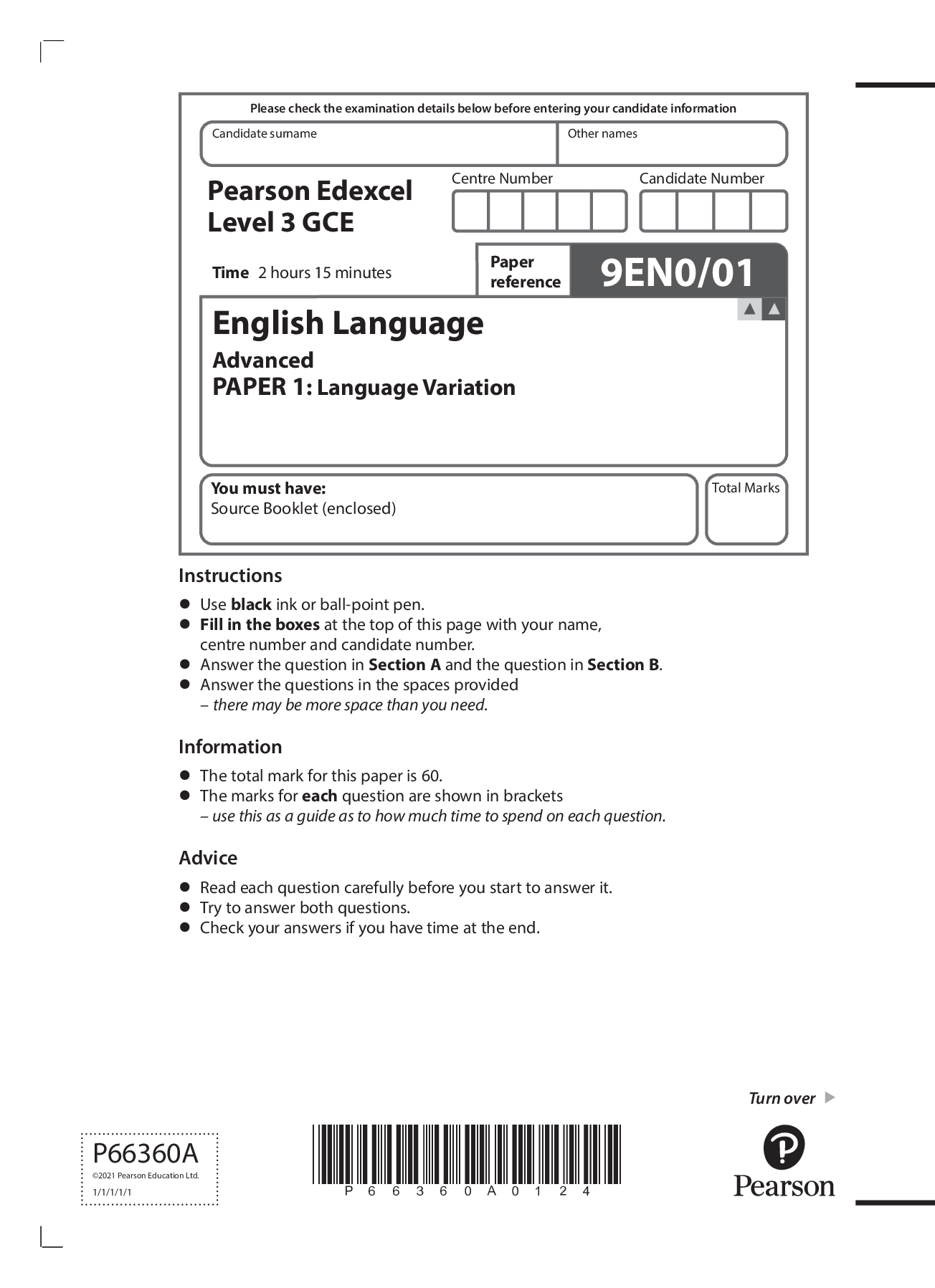
Buy this document to get the full access instantly
Instant Download Access after purchase
Buy NowInstant download
We Accept:

Reviews( 0 )
$13.00
Can't find what you want? Try our AI powered Search
Document information
Connected school, study & course
About the document
Uploaded On
Apr 10, 2022
Number of pages
45
Written in
Additional information
This document has been written for:
Uploaded
Apr 10, 2022
Downloads
0
Views
195


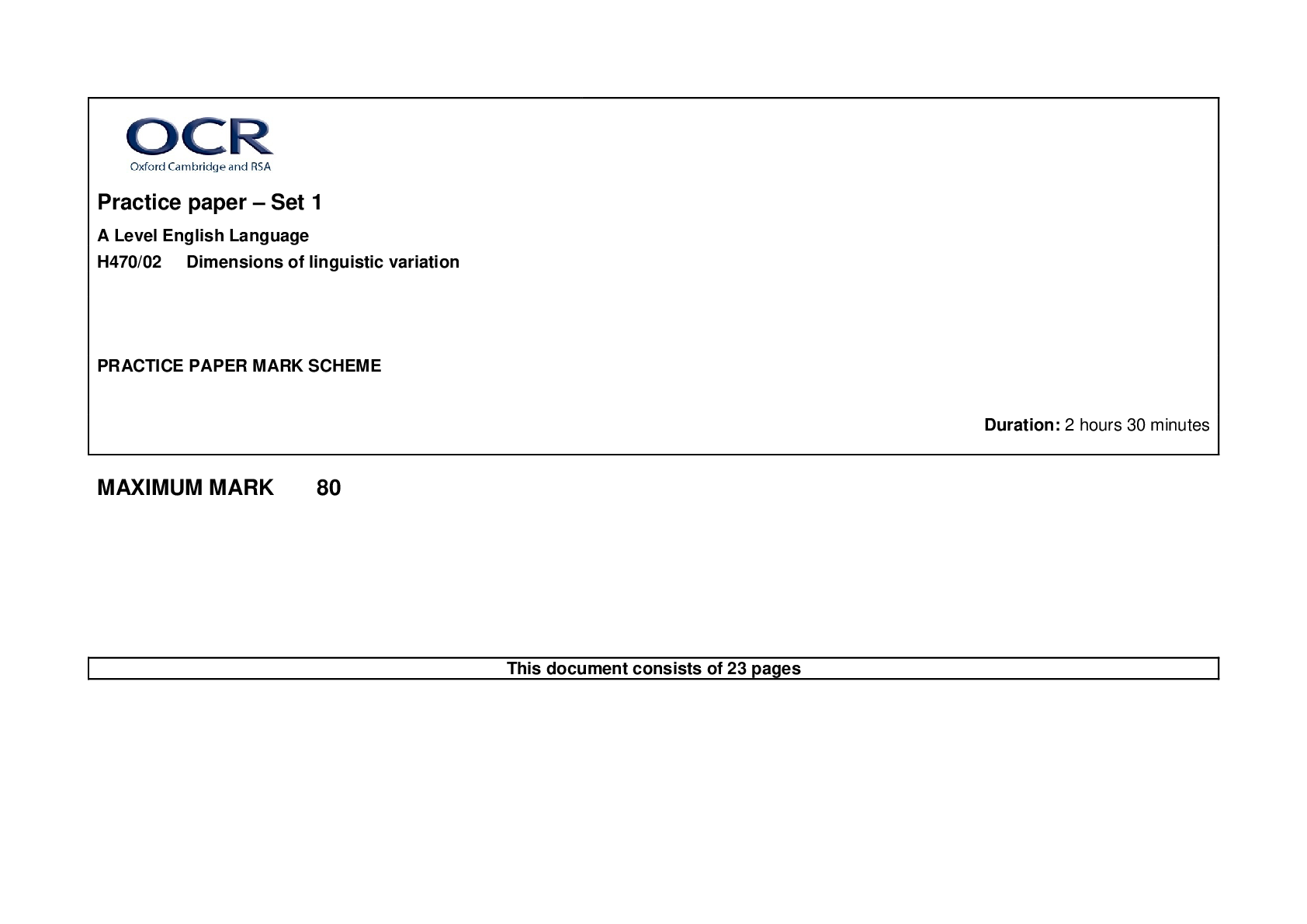
.png)
